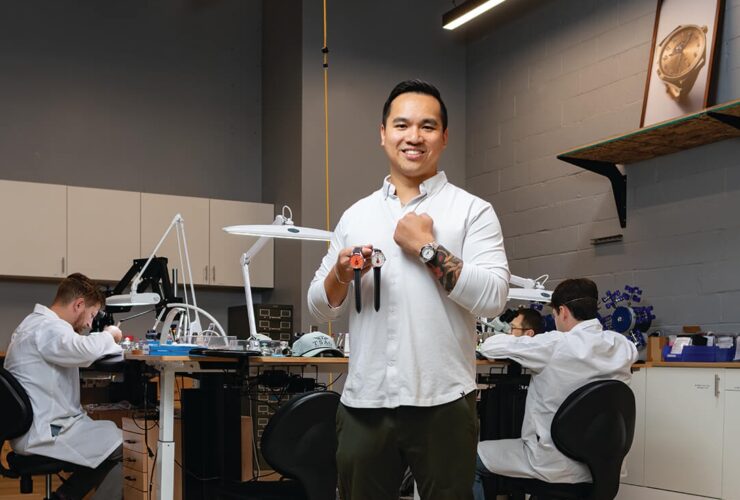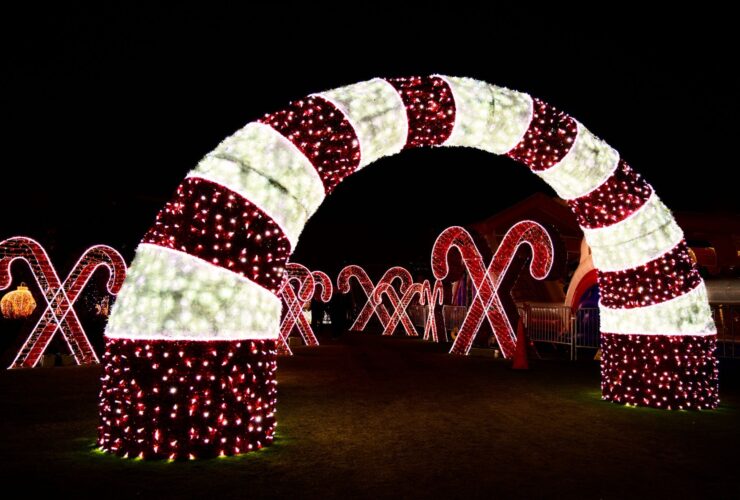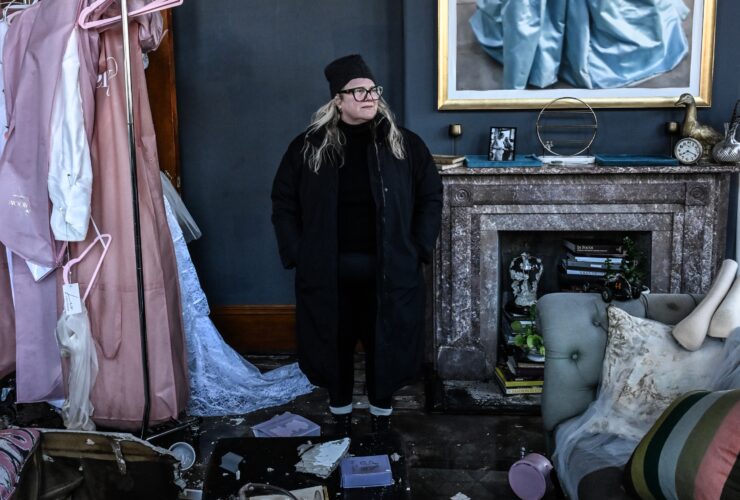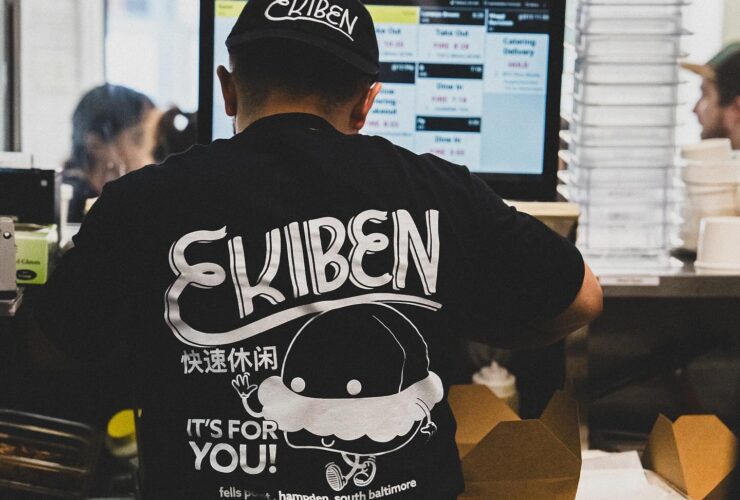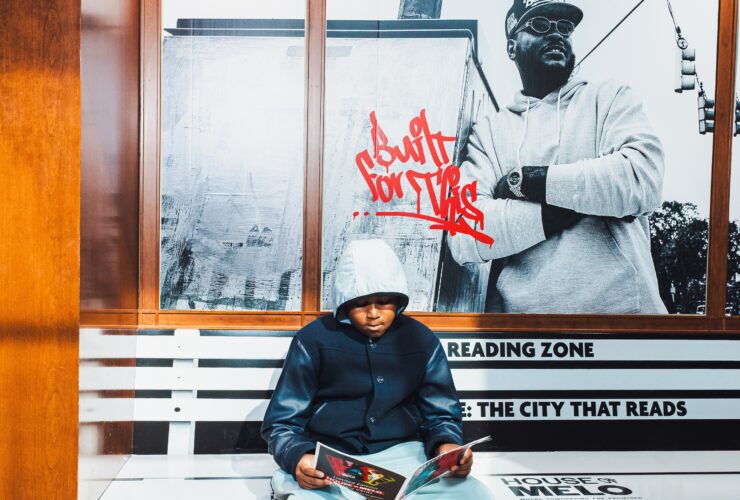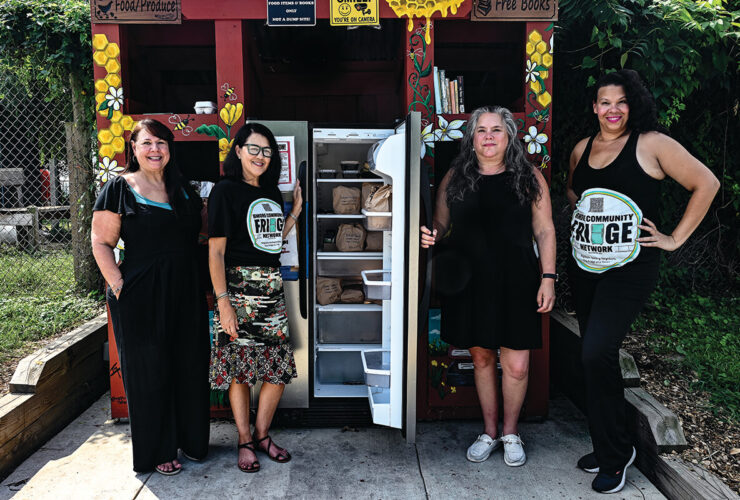-

Local residents join hands in a show of solidarity at a peace rally in front of City Hall on Sunday, May 3. —Nicholas Kamm/Getty Images
-

A crowded downtown march for peace on Wednesay, April 29, just two days after the worst riots shook the city. —Andrew Burton/Getty Images
-

The day after Monday’s riots, two young men clasp hands while dancing in Penn North. —Sean Scheidt
-

On April 29, students from Digital Harbor High School carry homemade signs and chant, “We love Baltimore” as they march outside City Hall. —Win McNamee/Getty Images
-

Pastor Joel Kurz, in hoodie, of The Garden Church prays with community leaders. —Sean Scheidt
-

One day after Monday’s riots, the mood was sometimes celebratory. - Matt Rourke/AP Images
-

Clean-up efforts began immediately on April 28, as residents chipped in to help damaged businesses and communities. —Lynn Hunter
-

A memorial to Freddie Gray now stands where he was arrested. —Sean Scheidt
-

U.S. Rep. Elijah Cummings, a calming presence, shakes hands with a Maryland State Trooper on April 28. —Matt Rourke/AP Images
-

A Baltimore City police officer dances during a May 9 block party in Sandtown-Winchester. —David Colwell
-

Protestors march from McKeldin Square to City Hall on May 1. —Sean Scheidt
-

Three brooms at the ready during a May 9 block party in Sandtown-Winchester. —David Colwell
-

Small child playing the drums during the May 9 Peace Walk. —David Colwell
-

A simple chalk scrawl in the street expresses all that’s at stake. —Sean Scheidt
-

Baltimore showed its heart, quite literally, in the wake of the unrest. —Sean Scheidt
-

Street artist Nether adds to a mural that's across the street from where Freddie Gray lived. —David Colwell
-

Residents support protestors taking part in a nine-mile march through the city on May 1. —Sean Scheidt
-

A man walks by a mural honoring Trayvon Martin in Upton. —Sean Scheidt
-

Volunteers from all over the city came out on Tuesday, April 28, to help clean up the area. —Lynn Hunter
-

A subtle Baltimore touch is added to this sign from a May 2 rally at City Hall. —Sean Scheidt
Photo Essay: After The Unrest
On the ground after the city comes together and tries to heal.
We won’t be publishing our Best of Baltimore editors' picks online until August 24, but for now we wanted to share a special piece of the August issue with you.
We’re giving this particular “Best-of” to the entire city of Baltimore. Yes, all of us. Because we deserve it. There’s a perception that exists outside Baltimore that the protests and riots that broke out in the wake of Freddie Gray’s death were quelled only when state’s attorney Marilyn Mosby announced indictments against the six police officers involved in his arrest. But that’s not true. In fact, our city did suffer one of its most horrific nights in nearly 50 years on Monday, April 27—when the frustration and anger over Gray’s death and all it represented boiled over, resulting in an outbreak of violence and mayhem that shook our city to its core—but the healing actually began that night, too.
It began when Baltimore clergy, neighborhood leaders, and members of the city council and congress—including U.S. Rep. Elijah Cummings—locked arms and marched, trying to calm the incited tempers and appealing for peace. It began that night on CNN, when Rev. Donté Hickman stood in front of his church’s burning senior center in East Baltimore and vowed to rebuild: “Tonight I’m not about affixing blame, I’m focused on how we rebuild,” he said. “I see revival. I see the opportunity to rebuild from the ashes. I see a church that’s been resilient for over 80 years. . . . I see us now coming back even bigger and better than before.”
That spirit continued the next day. No one knew what Tuesday would bring. More fires? More looting? More face-offs between cops, the newly deployed National Guard, and protesters? Instead, there was a strong sense that Baltimore looked at the events of April 27 and said: “This is not us.”
Yes, there are problems in our city—huge, systemic problems that must be addressed. But we saw the images of ourselves being reflected in the national media and we collectively said: “This is not how we solve things here.”
So brooms were brought out, and trash bags and dumpsters for collecting debris, and people began cleaning the streets and lending a hand to the damaged businesses. Others marched and protested peacefully—expressing their anger and sometimes their grief—but they sang, too, and danced, and it almost felt celebratory. Businesses handed out free food and drink to both the cops and the protesters, and among the protesters and the police, a sort of cautious détente emerged. (One image of a little boy handing a bottle of water to a cop in riot gear went viral.) The Contemporary, Area 405, and Baltimore Design School teamed up to provide a safe space for kids to play and learn while city schools were closed. All of the Enoch Pratt Free Library branches stayed open, too. “[Libraries] are anchors in so many communities,” Enoch Pratt director Carla Hayden told the American Library Association. “We should be open, especially when times are tough.” To that end, the CityLit Festival went on as scheduled, even as most events planned for that weekend were cancelled. On Wednesday, the BSO pulled together a peace concert right outside the Meyerhoff. That went so well, they gave another one in West Baltimore’s Mondawmin neighborhood a few days later.
We still have a long way to go to fix the entrenched economic and social problems in this city. The recent spike of violence in our city has underscored that. The kind of dedicated community engagement and emerging leadership we saw in the wake of the Freddie Gray unrest is needed now more than ever. There is no “going back to normal.” What was normal was clearly broken. But Baltimore’s spirit—and its resolve—is strong. We have demonstrated over and over again that we are up to the challenge.

